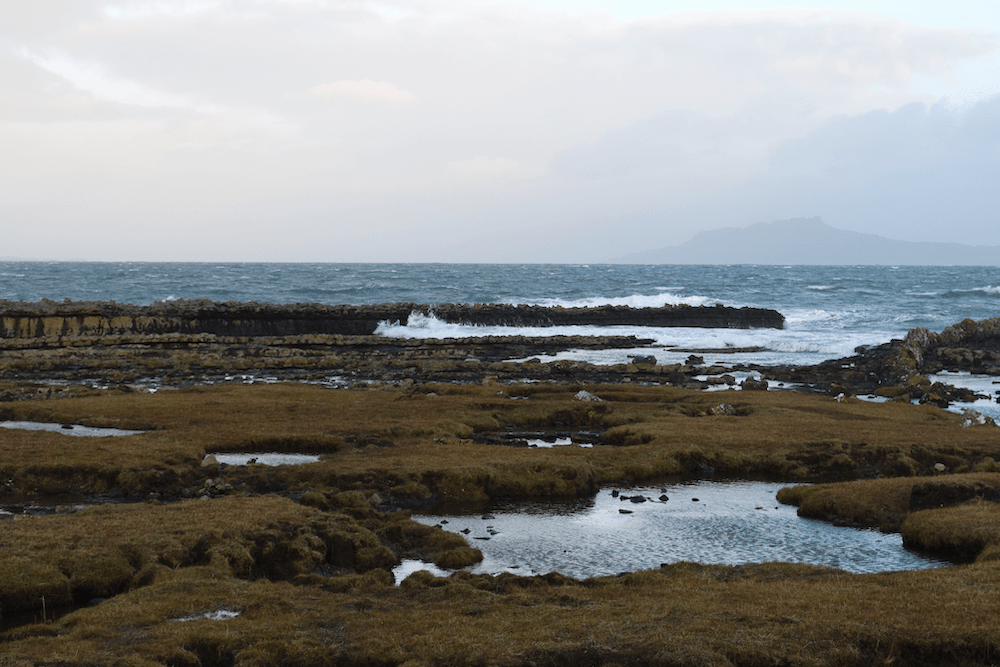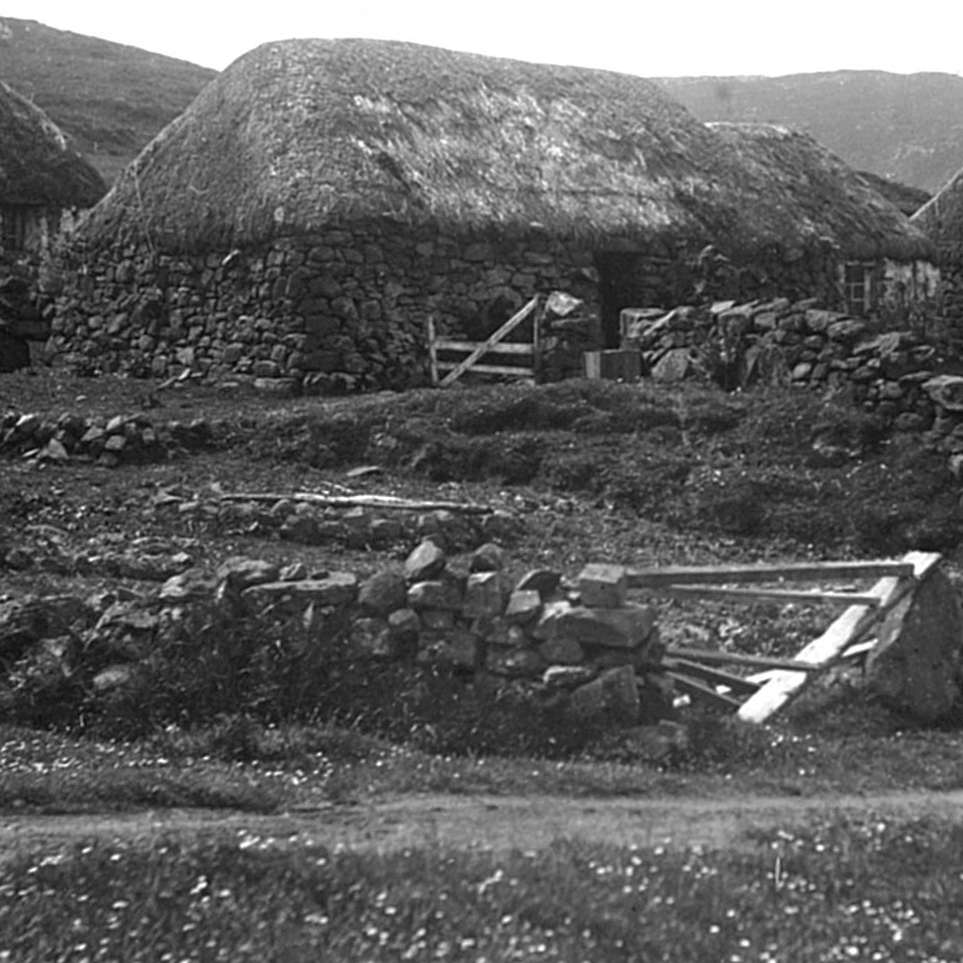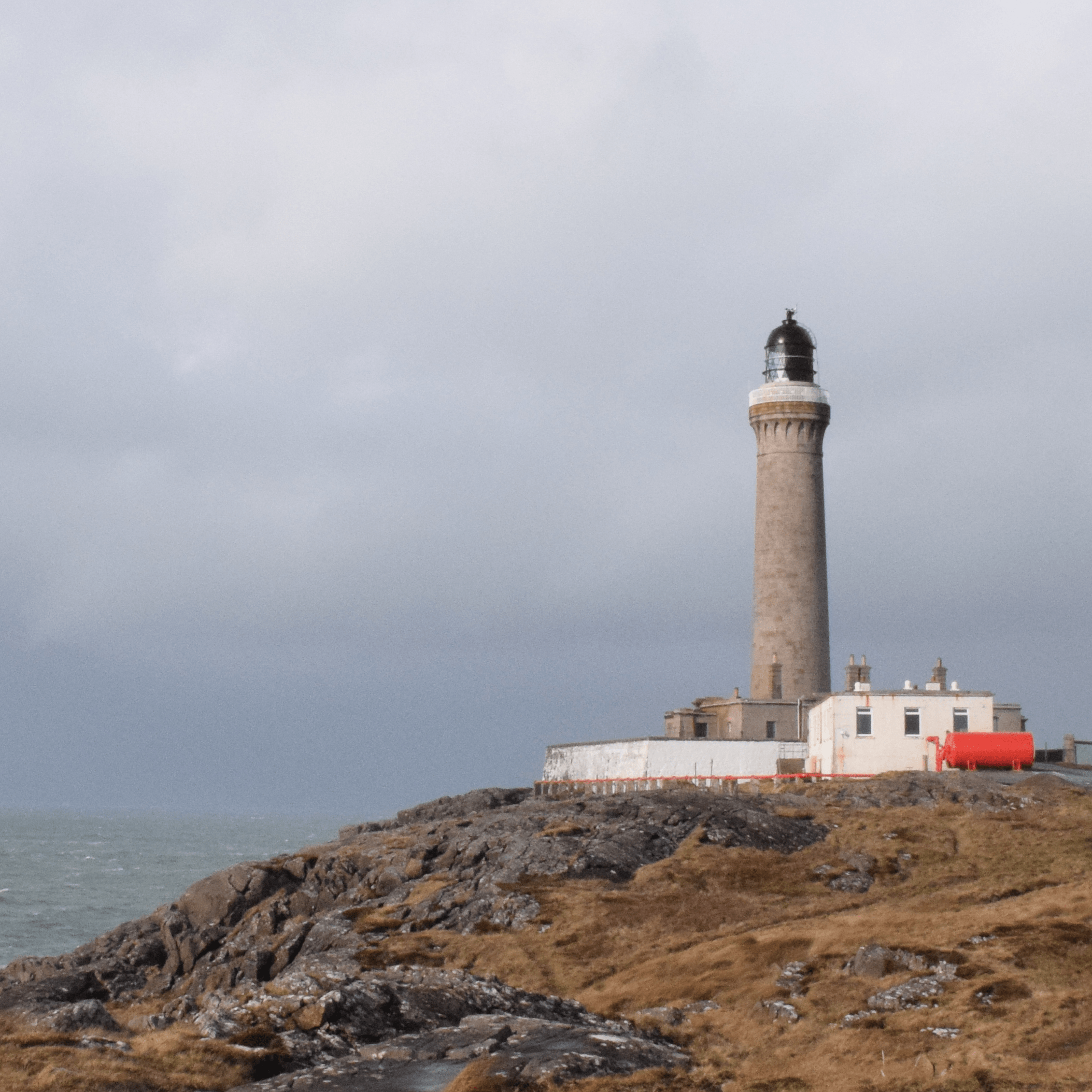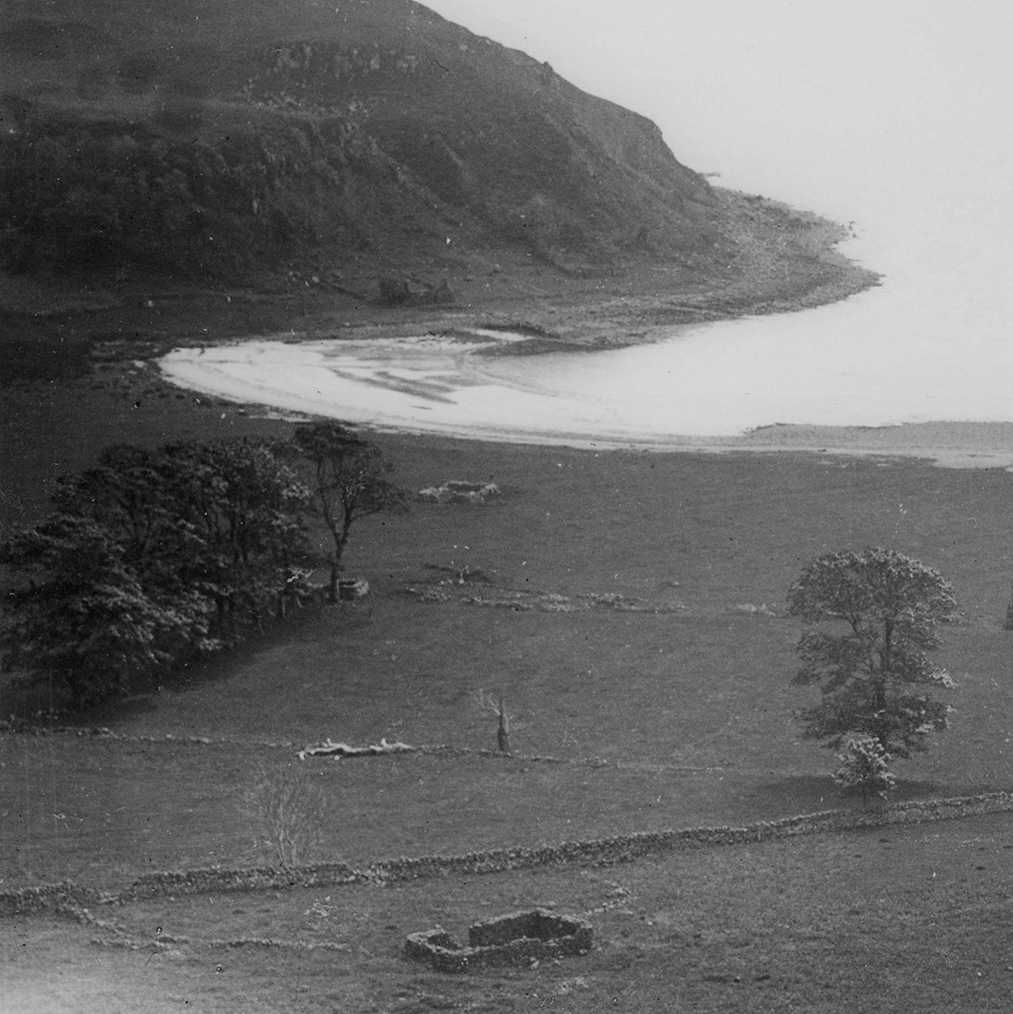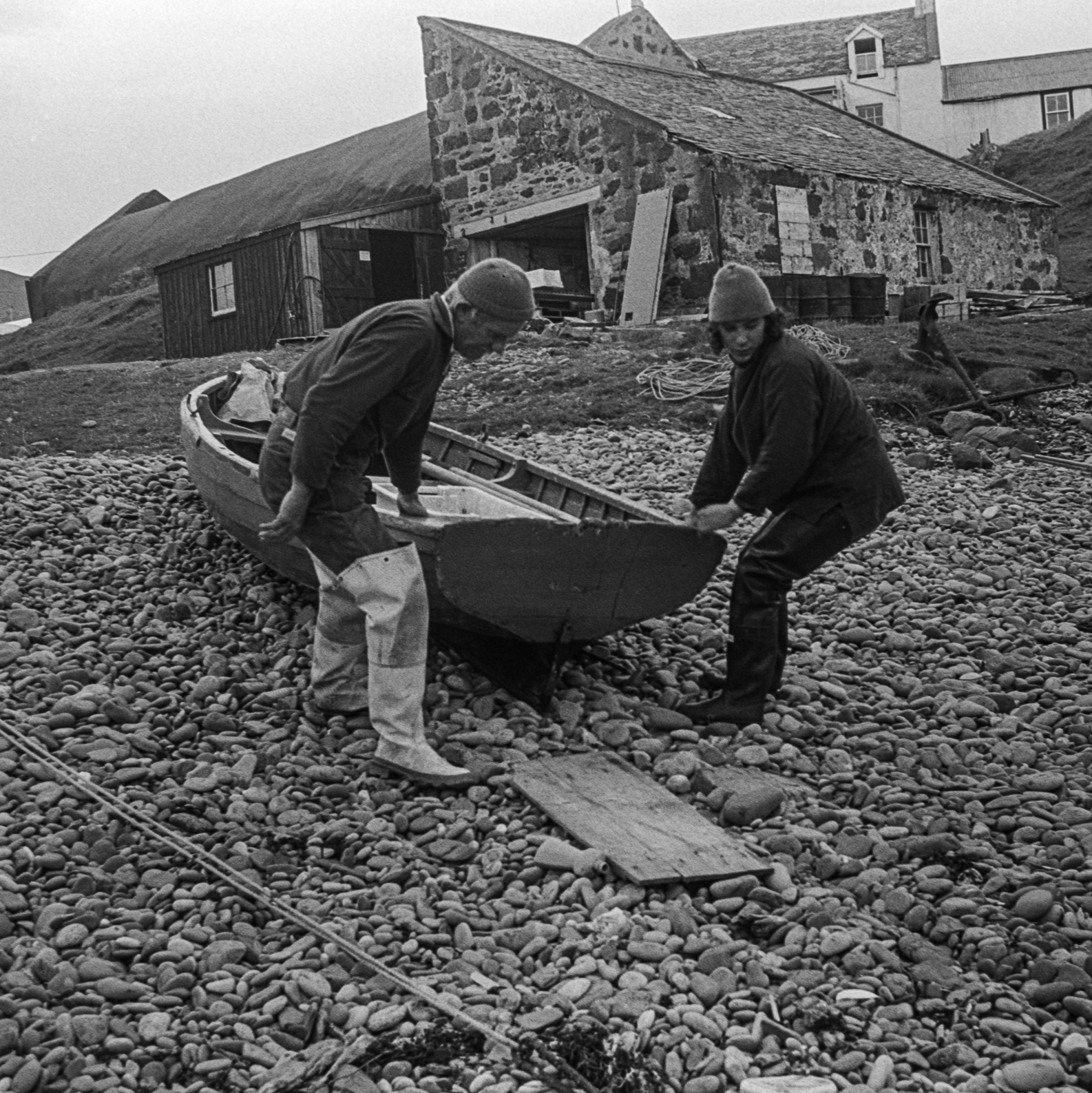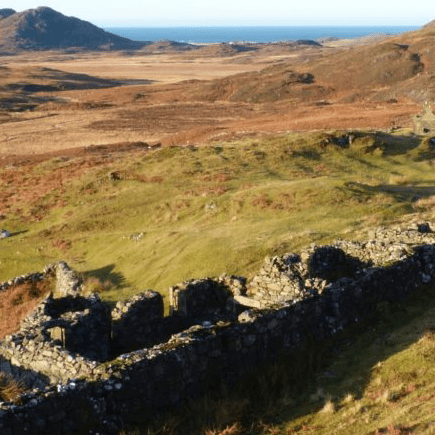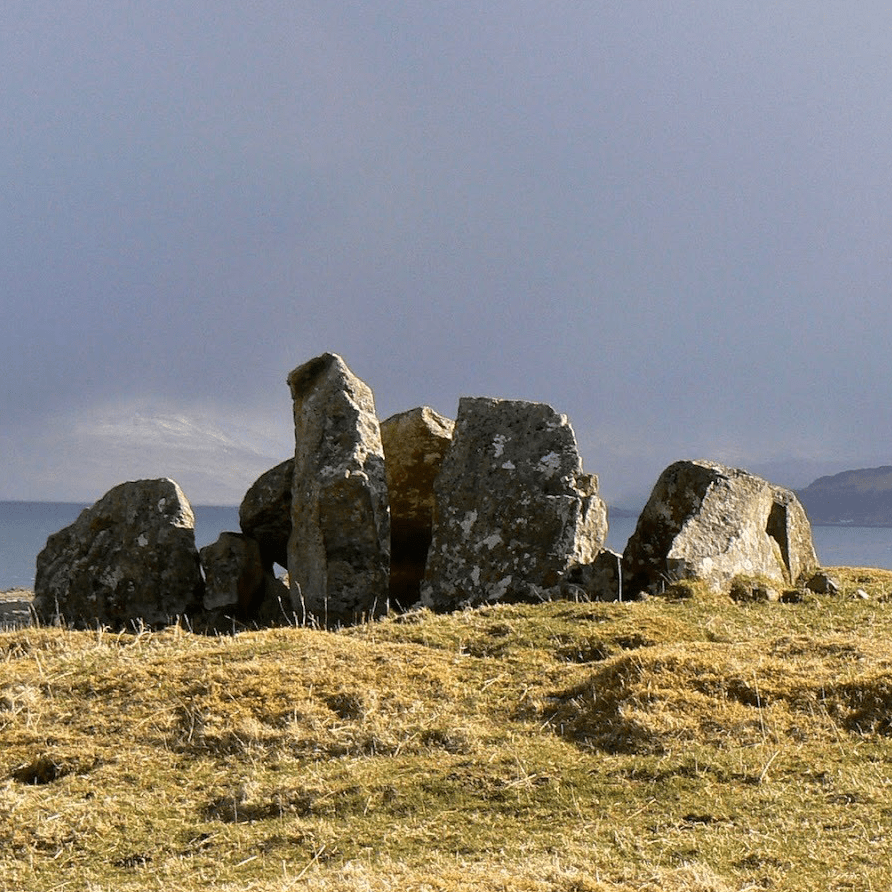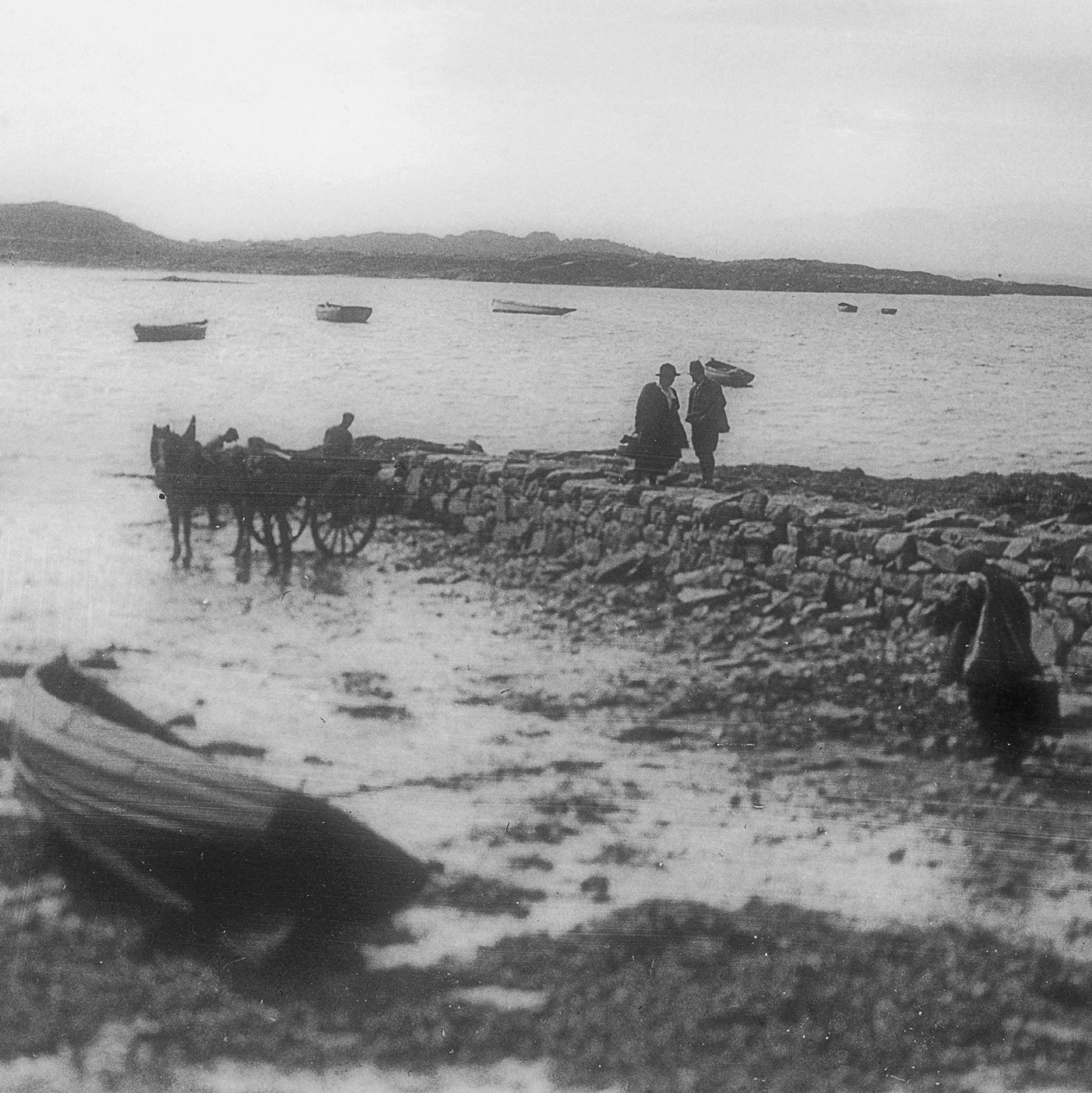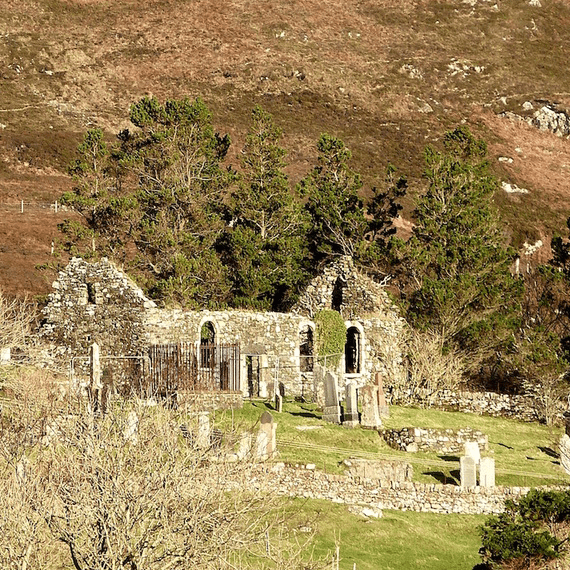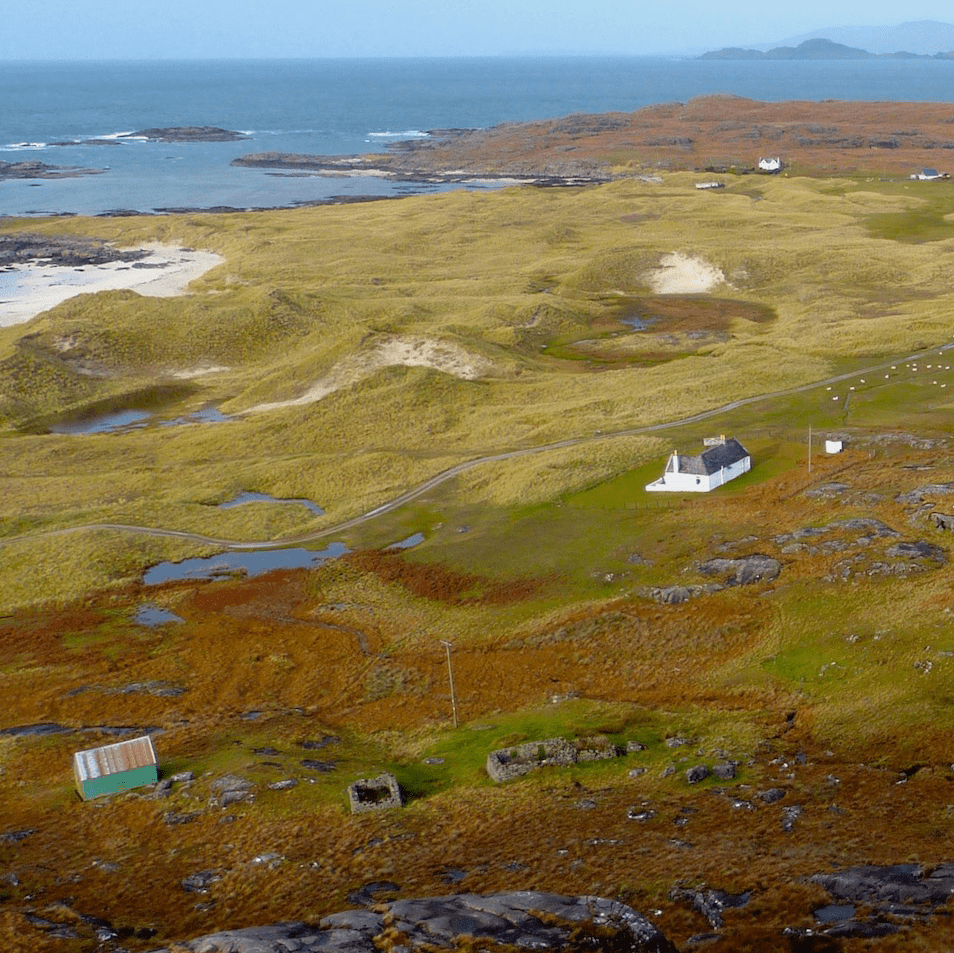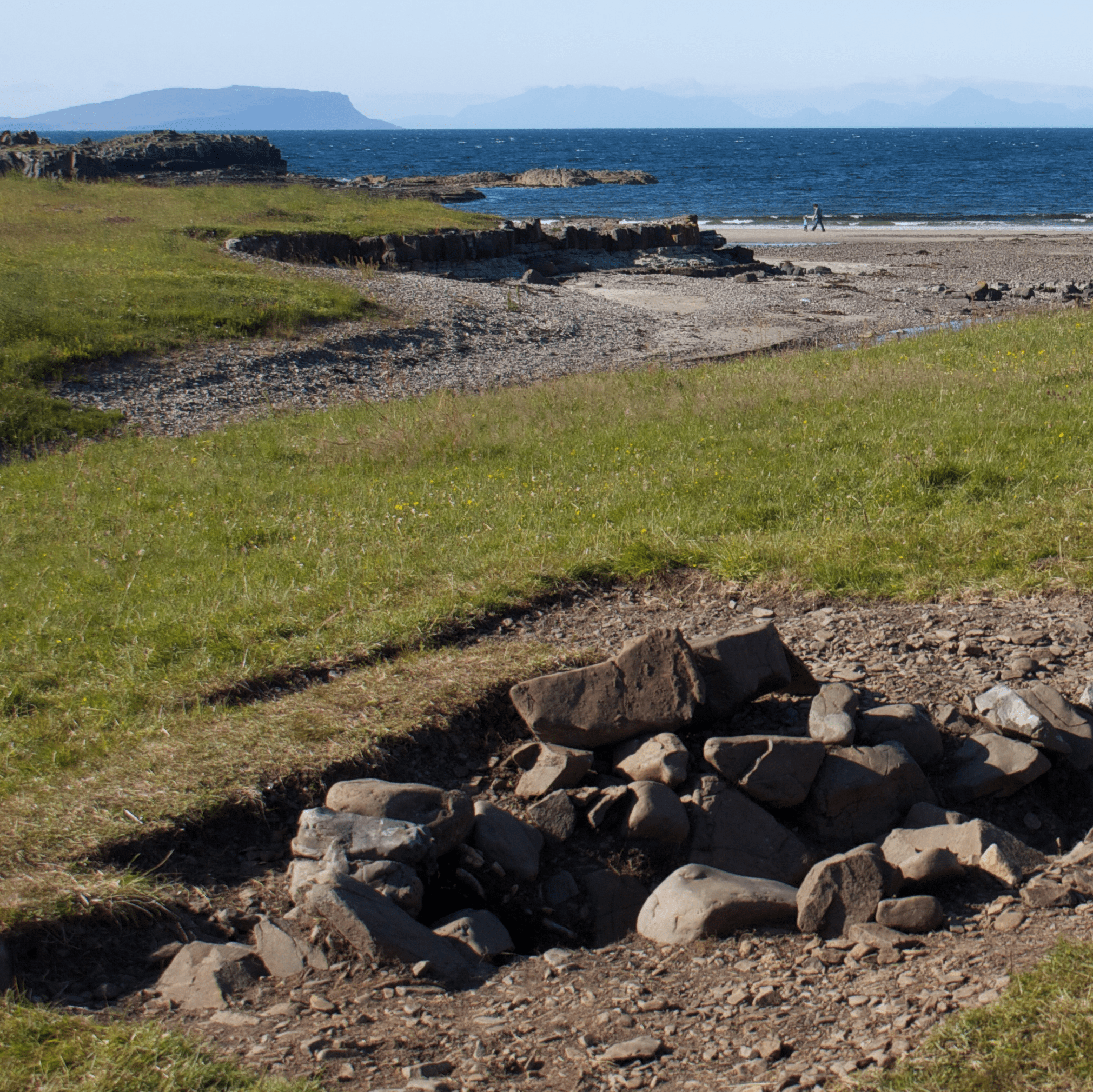Greadal Fhinn
Brief History
These types of sites helped the communities that built these monuments connect with their ancestors, and enact ideas about kinship, family and inheritance: Ideas that would have been important for the early farmers of the peninsula.
The site, originally 22 metres diameter, has never been excavated, but evidence from similar sites in Scotland as well as excavations carried out at Cladh Aindreis in Swordle by the Ardnamurchan Transitions Project, allow us to speculate what this site is, how old it is and how it was used. What you see today of this enigmatic collection of stones is a result of thousands of years of change and use.
Click here to find out more about Greadal Fhinn
Dig into layers of history
The presence of the Neolithic chamber suggests that people had already settled in the bay in prehistoric times. It would have been used as a burial site for a nearby settlement. Stone structures from this time remain to this day, while dwellings made out of local materials such peat, turf, thatch and wood perished.
Cairn
This illustration shows what the cairn chamber would have looked like.ʻCairnʼ meaning ʻcovered with stonesʼ. Over the years the stones were taken from the structure, and probably used as building materials.
Grave Passage
Greadal Fhinn is a Neolithic cairn of the Hebridean type. Itʼs a passage grave, meaning the access to the chamber was through a narrow passage. The entrance might have been on the south-east side.
Look out for...
Cairns were often located in special places in the landscape. Look around you - what parts of the landscape do you think were important to Neolithic people?
Discover the stories of Greadal Fhinn...
We chose this as a place for ritual and burial because of its prominent position in the surrounding hills and skyline. We come here to connect with our ancestors, the landscape and each other.
